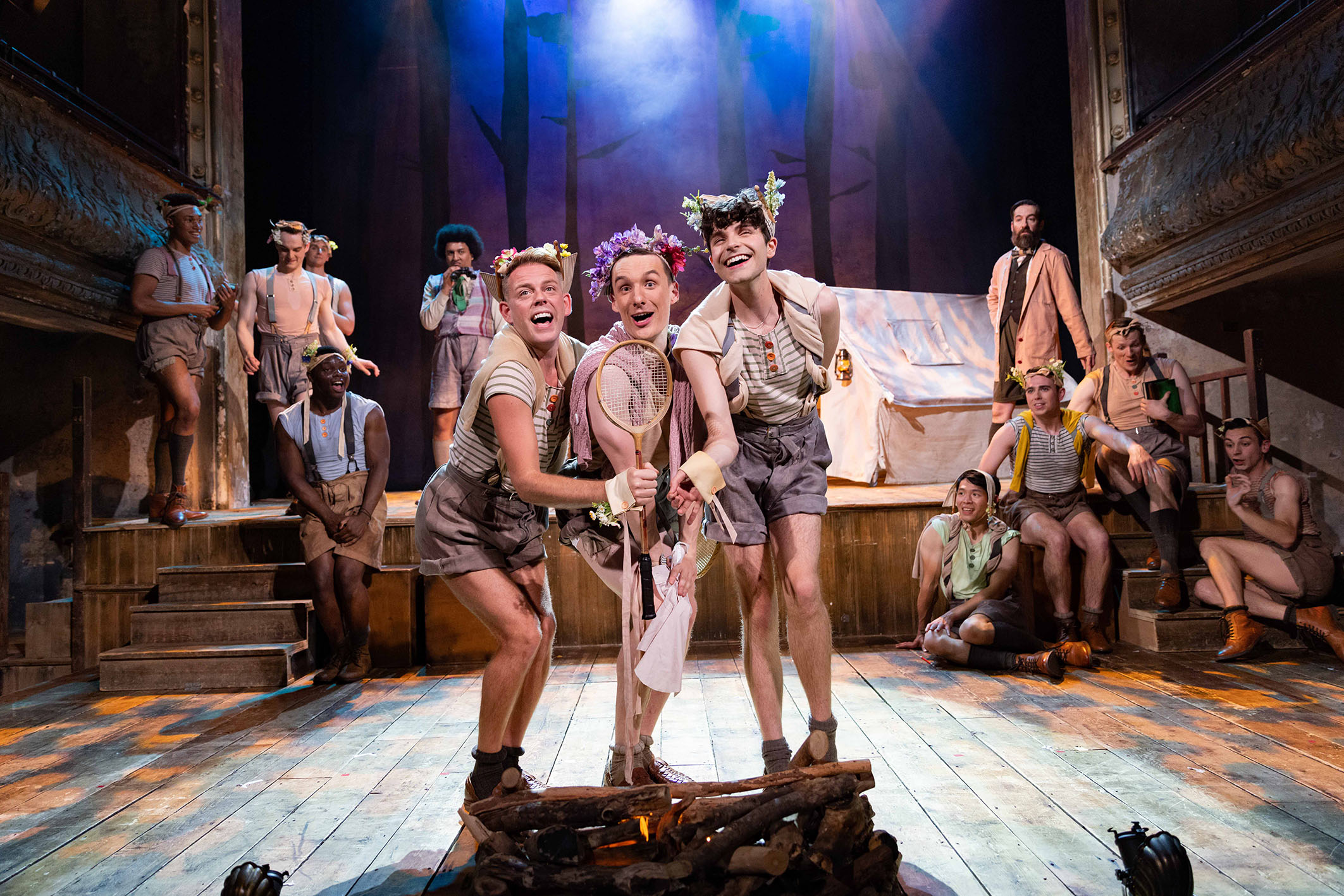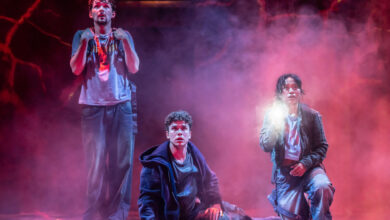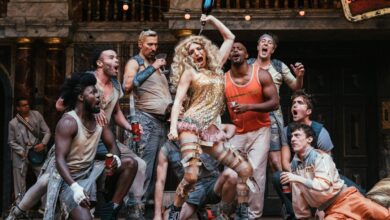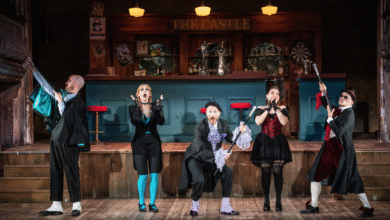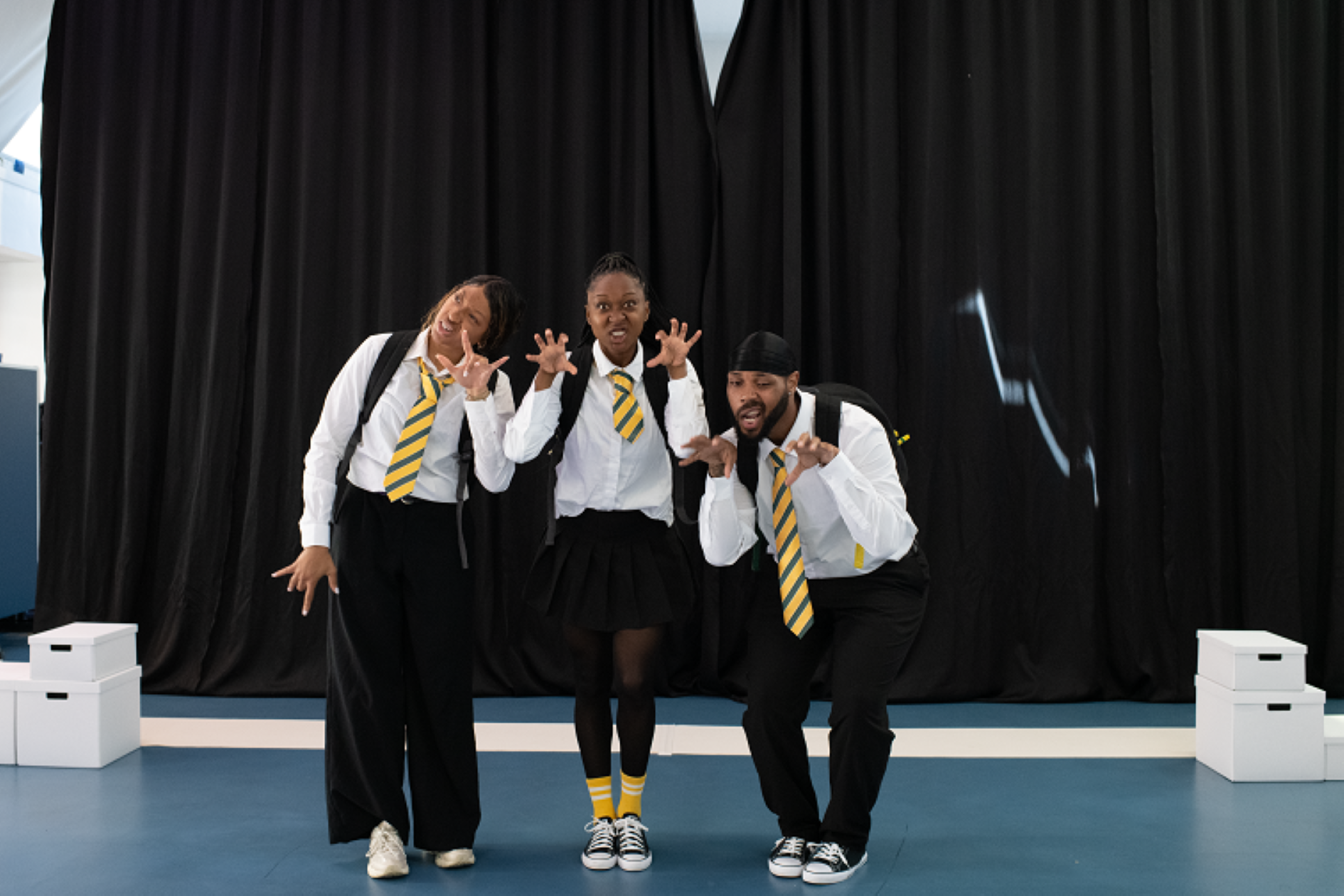Review: The Mikado, Wilton’s Music Hall
A refreshingly updated classic meticulously executed and exploding with fun.summary
Rating
Excellent
I’ve been following the All-Male Gilbert & Sullivan team for some years now, enjoying their inexorable rise. I can honestly say I have not seen a performance that was not superb. A highlight was that amazing moment in a lockdown pause when they were basically the only show on in town, and completely filled the enormous Palace Theatre: their fabulousness finally fully celebrated! Members of the ensemble have come and gone over the years, but with every production there is utter consistency in quality, no matter who steps in. How is it possible for them to keep up their impeccable standards?
At Wilton’s Musical Hall the cast for The Mikado has a few faces I’ve not seen before but under the inspired direction of Sasha Regan their signature precision, gorgeous aesthetics, and adorably playful humour are as exceptional as ever. G&S’s original story is here framed within the adventures of a troop of 1950s boy scouts out camping, who entertain themselves by staging a production. Refreshingly, the characters’ names have been updated, stepping well clear from notions of yellowface.
Camp indeed it is, and exploding with fun! Gorgeously exaggerated characterisation and Ryan Dawson Laight’s fastidious design work fit superbly alongside the Music Hall’s historic splendour. Every detail of costume, every prop, is linked thematically and humorously, with costumes made from picnic blankets or enamel dishes, and tents moving around left right and centre, providing opportunity for some marvellous hilarity and slapstick. The action is inventively arrayed across multiple levels, making best use of this unique venue, and it’s all sparklingly delightful.
But just how many outstanding performers can one show have? Declan Egan plays Bertie Hugh with charming sincerity, his glorious voice resonating warmly around the faded yet grand old hall from the first utterance of ‘A Wand’ring Minstrel I’. Then Sam Kipling is an exquisite Miss Violet Plum, with a soprano to die for and expert comedic delivery. Their romance is ridiculous yet perfectly heart-warming. Kitty Shaw is played by Christopher Hewitt both with elements of total harridan but also keen poignancy; a triumph indeed!
David McKechnie as Mr Cocoa – despite a slightly irregular cockney accent – is as splendid as ever, his ‘Little List’ song (‘As Some Day it Might Happen’) supplied with wittily updated contents. Making a hugely extravagant and impressive entrance, Lewis Kennedy as the Emperor is hilarious, and just has the audience in the palm of his hand. But all are in danger of being upstaged by the amazing Richard Russell Edwards as Hebe Flo and Owen Clayton as Bluebell Tring, who tirelessly and repeatedly create surprising, riotously funny moments. With Kipling, they are simply fabulous in ‘Three Little Maids’, and they should have a sequel just to themselves.
The entire ensemble, however, are not just spectacular singers, but also execute slick, creative dance routines under choreographer Adam Haigh. And the whole thing is meticulously held together by musical director Anto Buckley, keeping the operetta’s abundant array of familiar and popular pieces cheekily pacey and vivacious.
Rarely is such a talented collection of performers seen on a single stage, but here you just can’t go wrong. This Mikado is stylish, inventive, endearing and impressive, all in one great big bundle. It’s a fabulously fun night out from a flawless company.
Directed by: Sasha Regan
Musical Direction by: Anto Buckley
Choreography by: Adam Haigh
Design by: Ryan Dawson Laight
Produced by: Regan De Wynter Williams
The Mikado plays at Wilton’s Music Hall until 1 July. Further information and bookings can be found here.



